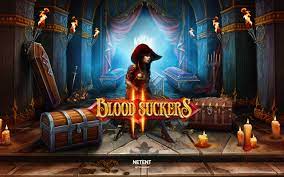In the realm of folklore and biology alike, blood suckers shine as a captivating subject. From mythical vampires to real-life leeches, these creatures have sparked intrigue, fear, and wonder throughout history. This article delves into the multifaceted world of blood suckers, examining their roles in folklore, their biological significance, and their impact on human culture and perceptions win55.
The Mythical Blood Suckers: Legends and Lore
Throughout history, blood suckers have been woven into the fabric of myths and legends across cultures. These stories often reflect humanity’s battle against the unknown, exploring themes of danger, power, and the supernatural.
Vampires: The Iconic Blood Suckers
The most iconic representation of blood suckers in mythology is undoubtedly the vampire. Emerging from Eastern European folklore, vampires are often depicted as immortal beings that thrive on the lifeblood of humans.
Legends surrounding vampires vary significantly. In some tales, they are portrayed as tragic figures cursed for eternity; in others, they are ruthless predators. The modern image of the vampire, influenced by literary works like Bram Stoker’s “Dracula,” has evolved into a symbol of romance and seduction intertwined with horror.
A key aspect of vampire lore is the act of blood-sucking itself. This act symbolizes a deeper connection between life and death—a metaphor for dependency and dominance. On a psychological level, the allure of vampires reflects societal fears about intimacy, power dynamics, and mortality.
Folklore from Different Cultures
Vampires aren’t the only manifestations of blood suckers in folklore. Cultures around the world have produced a variety of similar creatures. For instance, the Chupacabra, a legendary creature from Latin America, is said to drain the blood from livestock, instilling fear and curiosity in equal measure.
Similarly, the Jiangshi in Chinese folklore is a reanimated corpse that sucks the life force from the living. Each of these creatures serves a specific societal purpose—whether to caution against moral decay or explain natural phenomena.
These global blood suckers depict not just fearsome entities but also a reflection of cultural values, fears, and historical contexts. They remind us that while blood suckers may be tied to monstrosity, they resonate deeply with human experiences and anxieties.
The Evolution of Vampire Narratives
As society evolves, so too does the narrative surrounding blood suckers. Contemporary portrayals of vampires—seen in TV shows like “Buffy the Vampire Slayer” and “Twilight”—often challenge traditional notions. They explore themes of identity, acceptance, and morality, transforming the vampire figure from a mere monster to a complex character.


